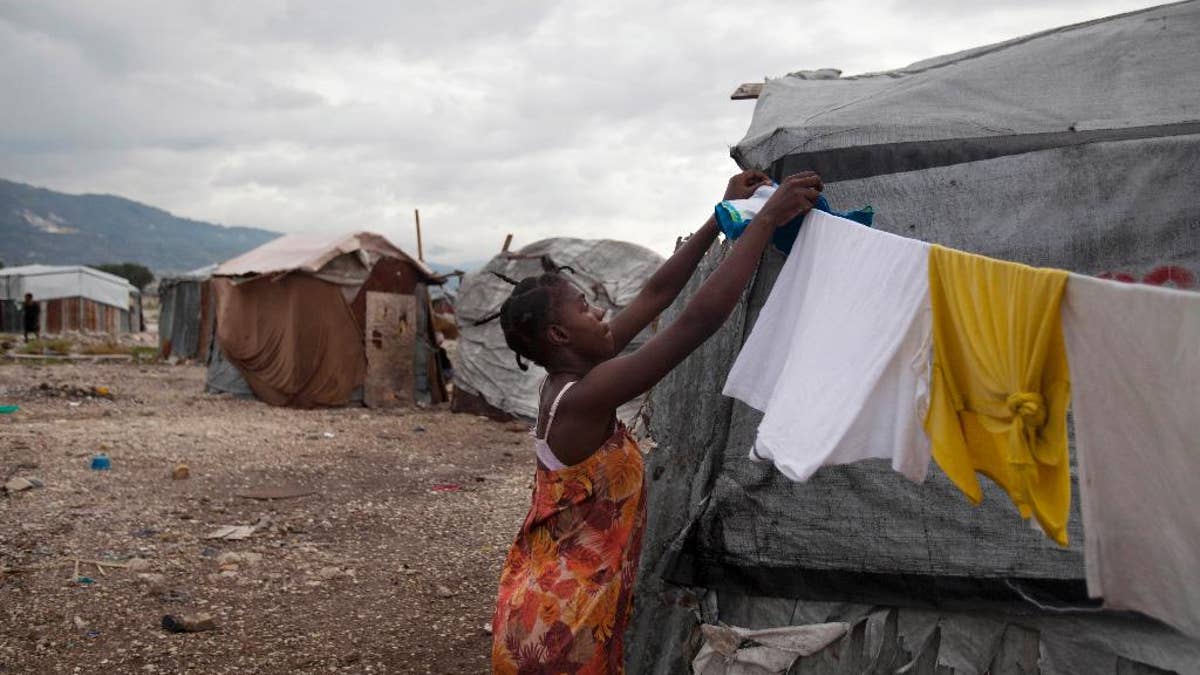
FILE - In this July 10, 2013 file photo, a woman fixes a clothes line next to her tent under cloudy skies caused by the nearby passing of Tropical Storm Chantal at the Jean-Marie Vincent camp for people displaced by the 2010 earthquake in Port-au-Prince, Haiti. A study released on Monday, April 7, 2014 finds that many of the camps are growing again, even as the overall population of quake refugees is falling. The study from the International Organization for Migration attributes the phenomenon mostly to people who have returned because they canít afford rents elsewhere. (AP Photo/Dieu Nalio Chery, File) (The Associated Press)
PORT-AU-PRINCE, Haiti – Many of the camps for Haitians displaced by the 2010 earthquake are growing again, even as the overall population of people displaced by the disaster is falling, according to a study released Monday.
The International Organization for Migration, a Geneva-based humanitarian group backed by 155 governments, said on Monday that 78 of the 243 remaining camps saw numbers rise.
For example, Petionville, one of the districts that make up the hilly Port-au-Prince metropolitan area, experienced a minor uptick, from 8,451 people in December to 8,498 in March.
The IOM reported that many people said they were forced to return because they couldn't afford rents elsewhere after year-long subsidies ran out. The rent help had been backed by aid groups to help people move out of camps.
Some people said they came to camps back to rejoin family members. Others said they merely switched camps.
"This phenomenon, even though always present ... is lately becoming more visible," the report said.
The IOM said the number of people living the gloomy settlements reached its peak several months after the January quake at 1.5 million people. But the overall number of people living such in encampments has steadily dropped, and the new report said that number is now at 137,543 people, almost 9,000 fewer than reported in January.
The makeshift settlements were once ubiquitous in Port-au-Prince, covering parks, soccer fields, parking lots and even median strips. But they have become less visible because of the rental subsidies, combined with land owners kicking people off their property.
Still, the crudely constructed homes can be seen in alleyways and on the mountainsides that surround the capital region, a teeming metropolis with 10 million people.
The IOM said it doesn't know how many people displaced by the quake live outside the camps.
